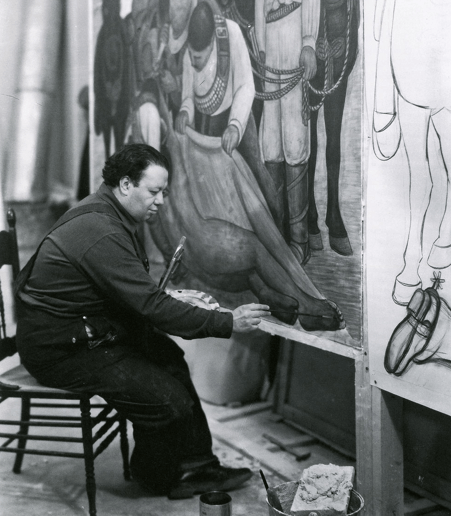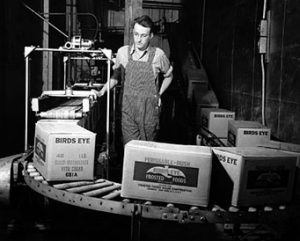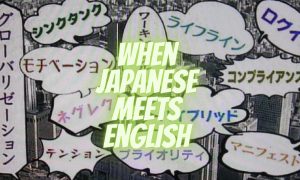Winner of the Spring 2017 StMU History Media Awards for
Best Article in the Category of “Culture”
When entering a Mexican restaurant today, one takes notice of the different aromas, both sweet and savory; one notices the patrons often speaking their language of Spanish; one hears the vibrant tunes of a jukebox; however, one might ask whether the art hanging on the walls of the restaurant isn’t also worthy of the patrons’ attention? One may have seen the famous work of art depicting a woman of colored skin, brown as sugar, contrasting with the white of beautiful calla lilies; or, if not, one might at least be familiar with another work by that same painter.1 The name of this artist, who is known far beyond the Mexican restaurants that hang his famous paintings and murals, is Diego Rivera.

Born in Guanajuato, Mexico, on December 8, 1886, Rivera grew up always seeming to have a hand for creating art. As a child, he had his own studio to work in and later he was granted a scholarship that allowed him to take his talent to Europe, especially to France, where he spent ten years expanding and perfecting his techniques. He is best known for his many influential murals and paintings that illustrate the struggles and lifestyles of the Mexican working class. Among his most famous murals is The History of Mexico from the Conquest to 1930, housed in the National Palace in Mexico City; The Making of a Fresco in San Francisco; and Detroit Industry, located in the city that was home to the American industrial worker in the early twentieth century.2

In the autumn of 1922, Rivera joined the Mexican Communist Party. This organization positively impacted the Mexican community through supporting miners’, factory workers’, and farmers’ rights. With the support of those miners, factory workers, and farmers, Rivera formed the Union of Technical Workers, Painters, and Sculptors. Through the Union, Rivera opened free art schools all over Mexico, through which he was able to spark the Mexican mural movement, enabling his protégés to showcase their art, inspired by Rivera’s own murals. Rivera became well-known in Mexico, and even people from different countries came to his Union to participate.3

In 1929, Rivera began working on a series of frescoes titled History of Mexico from the Conquest to 1930. The art piece took twenty years to complete because of minor adjustments and additions, and he also worked on other pieces in the interim. However, during this time of his busiest artistic activity, he was expelled from the Mexican Communist Party for being “too busy” painting. Despite his expulsion, he continued to favor the working class and always believed he was one of them.4 On February 9, 1934, Nelson Rockefeller was said to have sent workers to destroy a mural located in the Rockefeller Center in New York City, a mural Rivera had spent many weeks painting with smooth precision. The painting was destroyed because of a portrait of Vladimir Lenin painted in the mural, which was not originally in the sketch sent for Rockefeller’s approval. This left Rivera in a state of depression and exhaustion after realizing his hard work was put to waste, without even being given a chance to be named.

Despite the controversies Rivera encountered throughout his career he was still a magnificent painter and influenced much of Mexico’s national art.5 In 1947, another one of Rivera’s murals heated his audience, Dream of a Sunday Afternoon in the Alameda. It was located in the Hotel del Prado across the street from Alameda and the painting covered the history of the park and its peoples (from Rivera’s perspective) all the way from the years of the Spanish Inquisition to the Mexican Revolution. The reason it sparked criticism and caused demonstrators to slash the fresco was because the words “God does not exist” were written in the mural. Rivera, of course, repaired the damages made. In 1956, a year before his death, he announced “I am a Catholic,” and changed the wording on the fresco.6 It was among one of the last great murals he painted. But despite the controversies that Rivera encountered throughout his career, he was still a magnificent painter and influenced much of Mexico’s national art.7

In addition to being a hard worker and a talented painter, Rivera was also great with the ladies. While in Paris he first became engaged to a Russian artist named Angelina Beloff, with whom he had a son, Diego Jr., who unfortunately died at fourteen months from the influenza epidemic of 1919-1920.8 In 1921, he returned to Mexico, where he met a fine beauty from Guadalajara named Lupe Marin. Just a short year later they were married, leaving Angelina in Paris still believing that they were engaged. In the years that followed, Marin bore Diego two daughters, Guadalupe and Ruth.9 However, his infidelity caused their marriage to fall apart, with Marin left raising their daughters on her own. By 1929, Rivera had already remarried, but this time to the famous Frida Kahlo.10

Rivera was working on a painting in the National Palace in Mexico City when Frida approached him; she requested that he get down from the scaffold and give his honest opinion on her own work. After looking at her work, he called it “an unusual energy of expression,” calling her an authentic artist. She invited him to see more of her work at her home in Coyoacán. From there, a friendship blossomed, and soon they fell in love.11 Their marriage was not like any ordinary marriage; it was an emotional roller coaster of a relationship that was well depicted in both of their works, especially in Kahlo’s. She accompanied him everywhere: San Francisco, New York, Detroit, and many other places. They managed for many years, up until Rivera became involved with Frida’s younger sister. They then divorced in 1940.

During this time, Leon Trotsky (Soviet politician) was a target for many agents of Joseph Stalin and was found in his home with a pickaxe jabbed in his head.12 Previously, Rivera and Frida’s home in Coyoacán served as an asylum for Trotsky and his wife as a refuge from these assassins of Stalin’s. While in their home Casa Azul, Kahlo and Trotsky had an amorous affair, and a subsequent quarrel between him and Rivera.13 Rivera cut off any interaction with Trotsky and fled to San Francisco, where he started working on a mural. The police questioned Kahlo about Trotsky’s death, and she later followed Rivera to San Francisco. They remarried that same year, and despite his infidelities, they continued to be passionately in love. However, in 1954, after fourteen more mercurial years of marriage, Kahlo died, and Rivera mourned her death for a year before marrying his third wife, Emma Hurtado. Diego Rivera had a way with women, and his big belly and smelly self did not get in the way of his passion for both art and women.

Rivera was heavily involved in politics at an early stage of his life and continued to be up until his death. In 1955, he was diagnosed with cancer and traveled all the way from Mexico to Moscow to get treatment. Two years later, on November 24th, he passed away in his home in San Angel, Mexico City, Mexico. He wanted his ashes to be spread alongside those of Frida Kahlo in a templo he built; instead, he was buried. Rivera was head of the Anti-Imperialist League and held memberships in the National Peasant League and the Workers’ and Peasants’ Bloc. Also, he rededicated himself to the Mexican Communist Party in 1926 and was a delegate to the Moscow Peasant Congress in 1936.14 Rivera in many ways resembled the indigenous people of the working class illustrated in his works of art. Not only did they share the same native country, but they too were concerned for the political movement and the aftermath of the Mexican Revolution, and they too had the passion and drive to continue working hard, in both sickness and in health.
- Diego Rivera, “Desnudo con Alcatraces,” painting in oil, 1944, original in Private Collection. ↵
- Susan Goldman Rubin, Diego Rivera: An Artist for the People (New York: Abrams Books for Young Readers, 2013), 6. ↵
- Susan Goldman Rubin, Diego Rivera: An Artist for the People (New York: Abrams Books for Young Readers, 2013), 16. ↵
- Susan Goldman Rubin, Diego Rivera: An Artist for the People (New York: Abrams Books for Young Readers, 2013), 22. ↵
- Susan Goldman Rubin, Diego Rivera: An Artist for the People (New York: Abrams Books for Young Readers, 2013), 26. ↵
- William Stockton, “Rivera Mural in Mexico Awaits it New Shelter,” New York Times, January 4, 1987. Accessed April 17, 2017. http://www.nytimes.com/1987/01/04/arts/rivera-mural-in-mexico-awaits-its-new-shelter.html. ↵
- Susan Goldman Rubin, Diego Rivera: An Artist for the People (New York: Abrams Books for Young Readers, 2013), 26. ↵
- Susan Goldman Rubin, Diego Rivera: An Artist for the People (New York: Abrams Books for Young Readers, 2013), 12-13. ↵
- Susan Goldman Rubin, Diego Rivera: An Artist for the People (New York: Abrams Books for Young Readers, 2013), 16-18. ↵
- Frida Kahlo was an iconic revolutionary Mexican artist widely recognized for her disturbing personal self-portraits of the female body and known for her Tehuana style. See Encyclopedia of Activism and Social Justice, 2007, s.v. “Kahlo, Frida (1907–1954),” by Gary L. Anderson and Kathryn G. Herr. ↵
- Susan Goldman Rubin, Diego Rivera: An Artist for the People (New York: Abrams Books for Young Readers, 2013), 18-21. ↵
- Encyclopedia of Activism and Social Justice, 2007, s.v. “Trotsky, Leon (1879–1940),” by Gary L. Anderson and Kathryn G. Herr. ↵
- Encyclopedia of Sex and Gender, 2007, s.v. “Kahlo, Frida (1907–1954),” by Fedwa Malti-Douglas. ↵
- Encyclopedia of Activism and Social Justice, 2007, s.v. “Rivera, Diego (1886–1957),” by Gary L. Anderson and Kathryn G. Herr. ↵



127 comments
Mario De Leon
I loved this article. I am not a big art fan but I do know who Diego Rivera is and I am a fan of his work. Growing up I would see replicas of his work in my relatives houses and in Mexican restaurants he has a very distinctive style that can be identified. His murals are amazing and tell so much story.
Ana Gonzalez
Diego Rivera is an interesting person. What I like most about your article is that you talked about how Diego Rivera was involved with the communist Mexican group. He is mostly always remembered as a muralist- which he was amazing at- and as Frida Khalo’s husband, but it isn’t always mentioned in detail how he was involved in and supported communism. You did a good job of mentioning that detail.
Great article, goodluck in winning any awards.
Johnanthony Hernandez
Great article, I’ve never been much of an art lover, but I have always admired Diego Rivera’s artwork. Your article really shed some more light on him that I didn’t know. It is saddening that much of his work was destroyed, but I do think that that is one reason that his name lives on. With what does remain drawing so much attention and awe from people.
Irene Astran
I really enjoyed the graphics throughout this article. They compliment your article perfectly, not only because you are showcasing the work of Diego Rivera, but because they showcase his vision. The point where you input the photo of his work in the Rockefeller Center especially helps show what elements of the mural were controversial. In total, they help illustrate how culturally and politically conscious Rivera was.
Bailey Rider
This is a fantastic article! The wait for it was worth it. Diego Rivera was such an interesting character and did so much in his life. I leanred a lot about him from your article. The photos of his murals and art throughout your article are mesmerizing. Your article is well written and seems very well written. Thank you for the great article!
Zaraly Frasquillo
Diego Rivera is by far one of my favorite artists, not just because he is Mexican but because his artwork is simply amazing. I did not know much about his background, so I thank you for providing that for me, it is much appreciated. I also appreciate how you provided images of some of his artwork, especially an image of my favorite piece of his, the Desnudo Con Alcatraces. I really enjoyed reading your article, it was really well put together.
Alyssa Vela
I read this article a little while ago, and didn’t think re-reading it would be very interesting but I was wrong. This was a great article! I’ve never really been the type to take much interest in art besides basic art appreciation. After reading this, I really do believe I’ll start paying a lot more attention to art everywhere, not just within a Mexican restaurant. You really did deserve to be nominated for all that you were nominated for. This was a great article, and I’m glad you’re getting the recognition you deserve for it.
Tyler Sleeter
Interesting read. I will admit I do not know anything about art, and even less about Diego Rivera. He seems to have led a fascinating life and knew many famous people. I never knew that there was a communist movement in Mexico and that so many artists were involved in the movement. I especially like the first paragraph of your article and the way you create an image of Mexican restaurants. I will definitely pay more attention to the art I see in all restaurants now.
Marissa Gonzalez
Reading this article again, I still feel engaged because I love the way you write your articles. I find it unfair that twenty years worth of Rivera’s work was messed up. I can’t imagine someone ruining my artwork that took many years to complete. I did find it amusing how you wrote Rivera was always focused on art and women. Because of this, he seemed like a unique and interesting man. You did a great job on including many images of his artwork because his work should be recognized as much as it can. Great job Gabriela!
Aaron Jaramillo
This is a great article! The way you used your images made your article come to life! I can tell you took your time researching and organizing it. Your introduction was a great one as it drew me in to the rest of your article. Its sad to read that many of his works were destroyed. Overall, I really enjoyed reading about Diego Rivera.